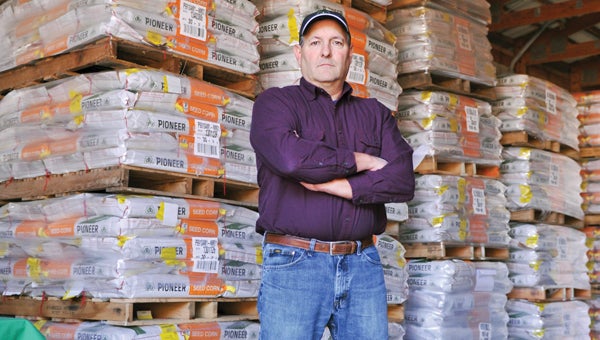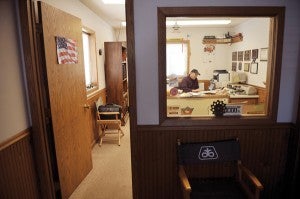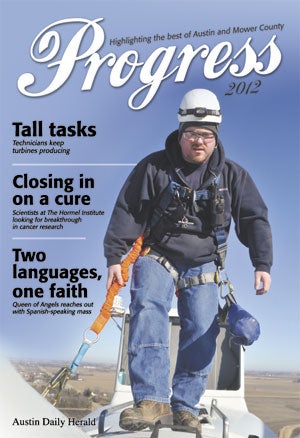Never an offseason
Published 11:57 am Friday, March 9, 2012

Between his seed business and farming, Mike Merten and farmers like him have more to deal with each year. — Eric Johnson/photodesk@austindailyherald.com
Mike Merten won’t start planting crops for months, but the job is never off his mind.
This story originally appeared in Progress 2012. Get a copy at the Austin Daily Herald.
Farmers don’t go on sabbatical between harvest and planting anymore — the job has evolved into a 365-day a year industry.

Today’s farmers deal with more than tending fields or livestock. There's more paperwork to be done that keeps farmers like Mike Merten at desks almost as much as in the fields.
“It’s gotten to be a very complicated business,” Merten said.
Merten said planning for the season is extensive. Planting alone requires a myriad of decisions like when to plant, and what seed varieties have been successful recently.
“You have to make some decisions on what to plant, timing, when to plant … a thousand different things about planting alone,” he said.
After seeding, Merten said he and his partners talk about fertilizers, then during the season, they have to keep a close eye on crops to see if chemicals are needed to address insects, diseases and weeds.
“A wrong decision can be very costly,” he said.
With all the equipment required and the cost of seeds and chemicals, Merten said it can be difficult for farmers to get started. A lot of money is tied up in expenses, like buying seed and equipment.
“Unless they’re independently very financially sound, it’s very hard to do,” he said.

Tom Merten jumps in a truck with a trailer filled with grain to take to the ethanol plant south of Lyle. For farmers these days, work continues well after and before the fields are dealt with.
Farming is even more complex because many farmers like Merten, who is also a sales representative for Pioneer Seed, work a second job.
For Merten, he started the second job when he was farming with his brothers, and his father was acting as the farm’s CEO.
“We were kind of long on labor,” Merten said.
A sales position opened at the Pioneer Seed near Austin and, as he said, “the timing was just kind of right.” Merten’s Pioneer Seed work largely falls in the summer when crops are already in the ground and in the winter when farmers are planning ahead.
Though he’s still working for Pioneer, Merten and a partner now manage the family farm. While Merten can balance the full-time job and farm work, he noted there’s never an off-season on a modern farm.
“We manage pretty well, but I will say that it’s a demand — it’s a demand on our time,” he said.
“It certainly fills up all our time,” he added.
Second jobs are manageable, however, because a large portion of farm work is now completed away from the field.
“There’s just a lot of time spent in an office at a desk making these decisions,” Merten said.
In fact, less and less of a farmer’s work is manual labor, according to LeRoy farmer Russ Roe.
“Farming anymore is not just going out there and working it,” Roe said.
Much of the work has shifted to planning and management, especially on larger operations. Roe said much of his work consists of following the agricultural markets and watching prices.
“You’ve got to know your costs and you’ve got to know your markets,” Roe said. “It’s a business; it’s not just farming.”
In fact, only a sliver of a farmer’s work is spent on the machinery people traditionally connect to the job.
“I don’t ever get on the tractor,” Roe said.




